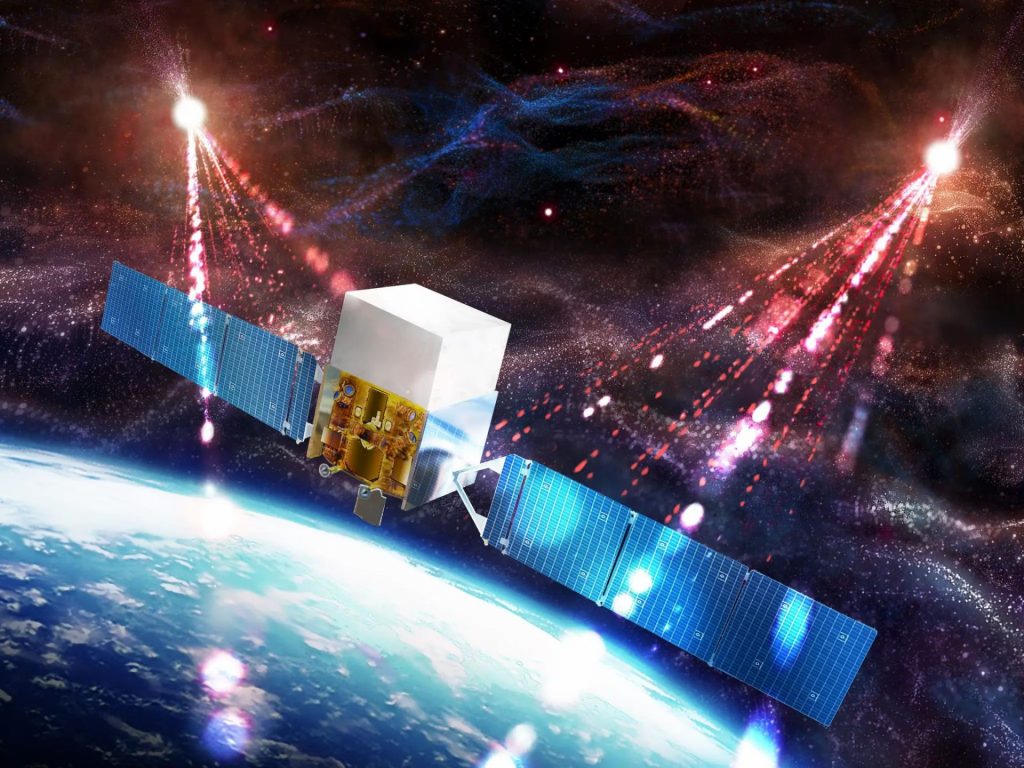Remarkable Discoveries: NASA’s NuSTAR Unveils Unprecedented Cosmic Explosion
Astronomers believe that GRB 221009A marks the birth of a new black hole formed within the core of a collapsing star. This phenomenon is illustrated by the black hole emitting powerful jets of particles traveling at nearly the speed of light. These jets penetrate the star, emitting X-rays and gamma rays as they stream into space.
The recent observations made by NASA’s NuSTAR X-ray telescope provide astronomers with new insights into the brightest and most energetic gamma-ray burst ever detected.
In October 2022, scientists detected the brightest gamma-ray burst to date, named GRB 221009A or BOAT. Unlike previous gamma-ray bursts, GRB 221009A exhibited a unique jet structure with a narrow core, wider sides, and variations in energy based on the distance from the core. NASA’s NuSTAR observatory and multiple X-ray telescopes documented these unprecedented phenomena.
When scientists first detected the gamma-ray burst, known as GRB 221009A, on October 9, 2022, they dubbed it the brightest ever, or BOAT. Most gamma-ray bursts occur when the core of a star more massive than our Sun collapses, forming a black hole. These events release an enormous amount of energy in just a few minutes, equivalent to what our Sun would emit over its entire lifetime. Follow-up studies revealed that GRB 221009A was 70 times brighter and significantly more energetic than the previous record-holder. Although scientists do not yet understand the reasons behind this extreme brightness, they have received a tantalizing clue from NASA’s NuSTAR observatory.
According to a study published on June 7 in the journal Science Advances, scientists used NuSTAR observations to demonstrate how the collapsing star ejected a jet of material with a previously unseen shape among gamma-ray burst jets, along with other unique characteristics. These distinctions could stem from the progenitor star’s physical properties, which could influence the burst’s features. Alternatively, an entirely different mechanism might be responsible for launching the brightest jets into space.
Gamma-ray bursts, the most energetic explosions in the universe, can be detected billions of light-years away. GRB 221009A was so luminous that it effectively overwhelmed most gamma-ray instruments in space when it was observed on October 9, 2022.
Brendan O’Connor, the lead author of the new study and an astronomer at George Washington University, described the event as significantly brighter and more energetic than any gamma-ray burst observed previously. Analyzing the NuSTAR data revealed the unique jet structure, which was particularly exciting because the star responsible for the event is no longer observable. However, the data obtained from the burst provides some clues about the explosion’s characteristics.
In the event of a typical gamma-ray burst, depicted in an artist’s concept, a jet of particles pierces a star as it collapses into a black hole. The jet observed in gamma-ray burst 221009A exhibited some unique features.
GRB 221009A, being a long gamma-ray burst, was so bright that it overwhelmed most gamma-ray instruments in space. U.S. scientists reconstructed this event using data from NASA’s Fermi Gamma-ray Space Telescope to determine its actual brightness. The BOAT was also detected by NASA’s Hubble and James Webb Space Telescopes, the agency’s Wind and Voyager 1 spacecraft, as well as the European Space Agency’s Solar Orbiter.
Similar to other gamma-ray bursts, GRB 221009A featured a jet that erupted from the collapsing star, resembling a stream of particles shot into space from a fire hose, with gamma rays radiating from the hot gas and particles at the core of the jet. However, GRB 221009A’s jet stood out in several ways. While previous observations revealed remarkably compact jets with little to no stra
Hits: 4










